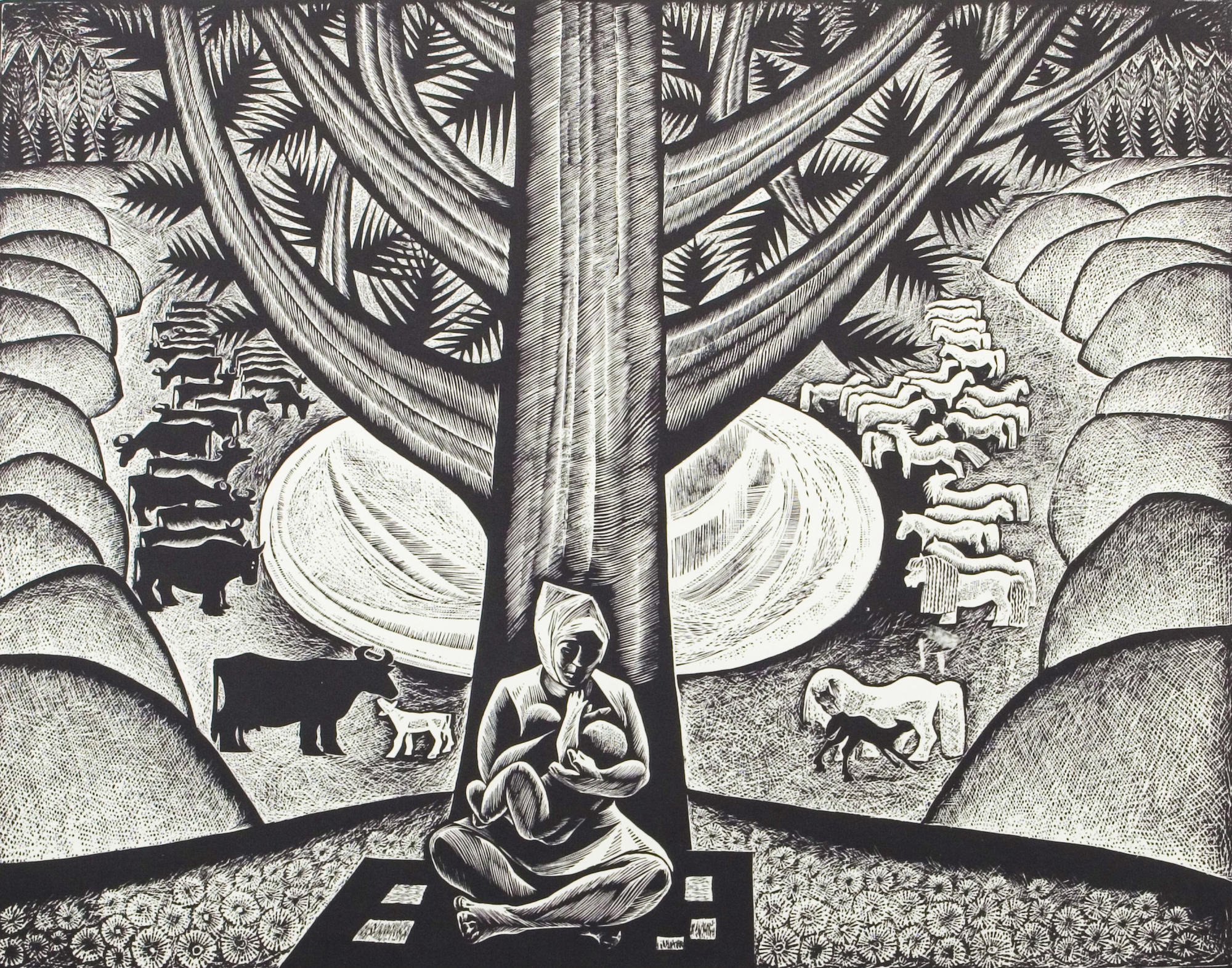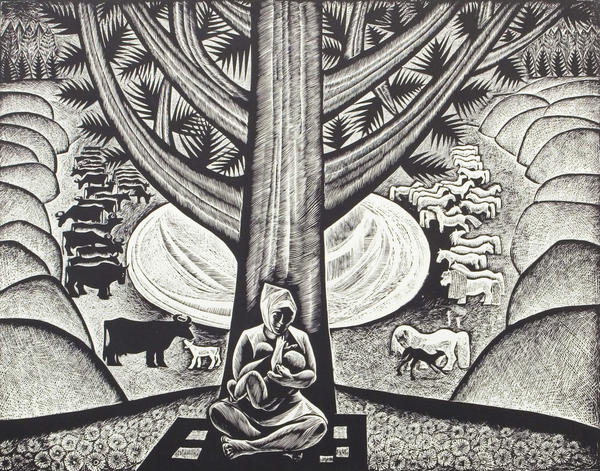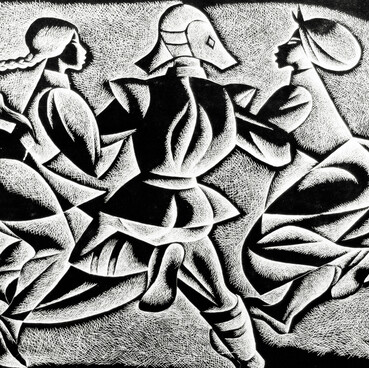Afanasy Munkhalov created 'Happiness' in 1969. In his linocut, he relied on the principal symbols of Yakutian mythology, denoting life and fertility. i. e., the tree, the lake, and horses. In allegorical language, the artist expressed his idea of happiness and harmony of the world.
In the centre of the composition, he placed a tree dividing the picture in two parts. At the right-hand side, he depicted a herd of white horses; on the left, a herd of black cows. The horse was associated with man’s nature, it was also a symbol of the owner’s wealth; the cow was associated with woman. The artist used the contrast colours to match the two elements against each other.
Beneath a tree, there sits a young mother breastfeeding her baby. She is in harmony with the environment, an embodiment of the underlying basic linkage between humans and nature.
Around the woman, there is an alaas, an oval-shaped valley emerging due to permafrost thawing and shrinkage of the soil. This phenomenon is typical of the Yakutian landscape. Usually, such hollows get filled with marshy lakes.
The tree makes the centre of the picture, it is also the image of happiness, prosperity, heavenly grace, and birth. Its long trunk is situated in three worlds at a time: the upper world - the home of gods, the lower world - where the dark forces come from, and the world of humans. Therefore, Sakha people have always perceived a tree to be a link between the world of gods and the world of humans.
Owing to the tree branches and direction of the crown, Munkhalov creates a special rhythm of the picture. The precise symmetry, flexible and rounded lines, and black and white strokes add to the atmosphere of calmness and tranquility. In the artistic world of the gravure, man and nature reside in unity.
Munkhalov strove to reflect the uniqueness of the Sakha people’s culture and for that reason he addressed the local people’s habits, traditions, symbols, and history. His works are a combination of musing over complicated subjects, impeccable drawing techniques, and a rich imagery system.
He was a unique master who developed a style of his own and made it known internationally. The art of Afanasy Munkhalov have taken part in more than twenty exhibitions abroad, and art critics call him the founder of the Yakutian graphic art school.



